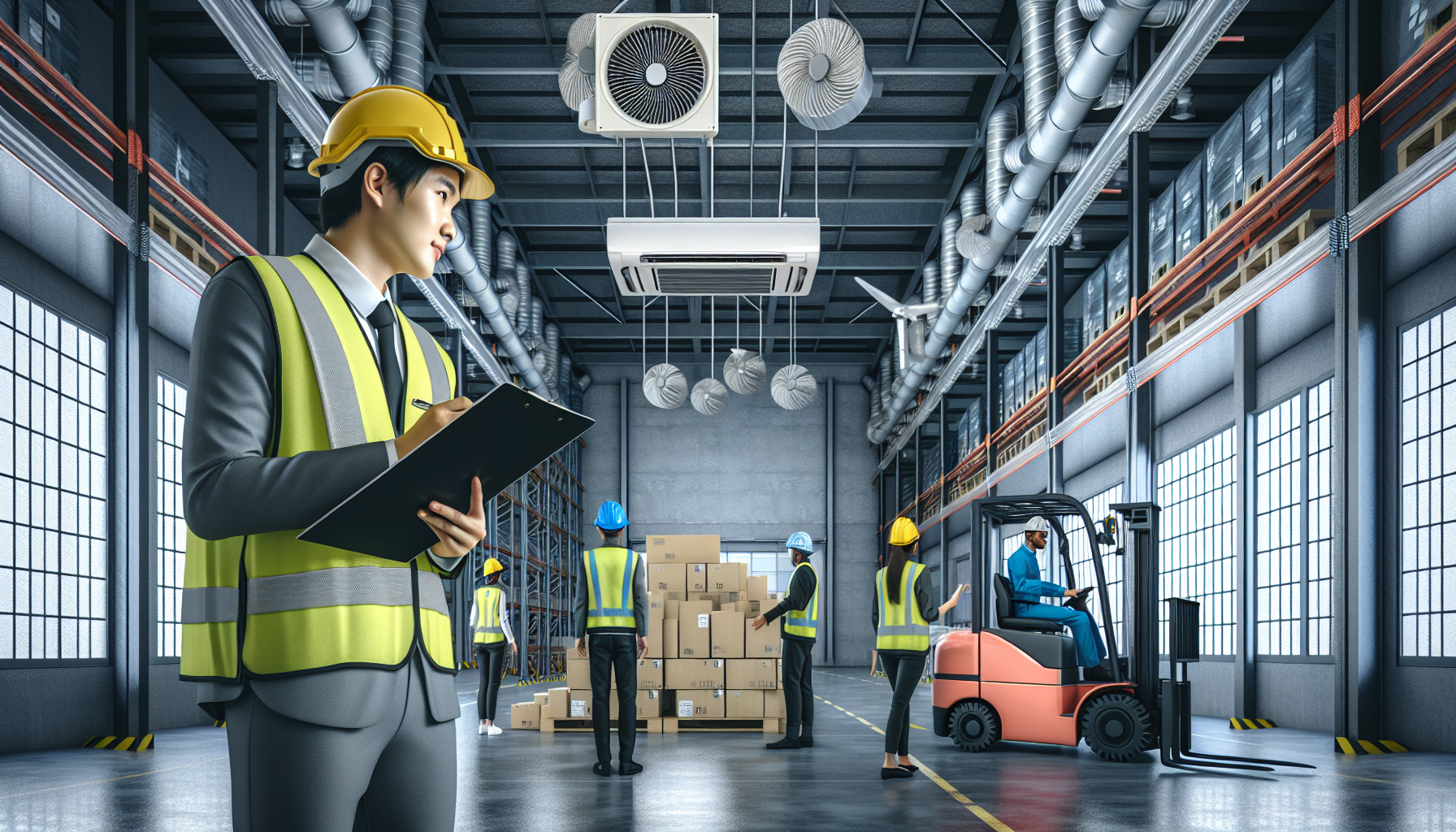The Impact of Climate Control on Warehouse Safety
Introduction
Warehouse safety is an essential aspect of any industrial operation. It not only ensures the well-being of workers but also plays a crucial role in maximizing productivity and minimizing costs. One factor that significantly impacts warehouse safety is climate control. By maintaining optimal temperature and humidity levels, businesses can create a safe working environment and prevent various hazards. In this article, we will explore the impact of climate control on warehouse safety and discuss its benefits.
The Importance of Climate Control in Warehouses
Warehouses are exposed to various environmental factors such as temperature fluctuations, humidity, and air quality that can significantly affect the safety of both employees and stored goods. Implementing proper climate control measures is essential to mitigate risks and create a conducive working environment. Let’s delve into the specific reasons why climate control is vital for warehouse safety:
1. Employee Comfort and Productivity
Extreme temperatures and high humidity levels adversely affect employee comfort and productivity. Working in uncomfortably hot or cold conditions can lead to fatigue, increased errors, and reduced concentration. By maintaining optimal temperature and humidity levels, businesses can ensure that employees work in a comfortable environment, boosting productivity and reducing the likelihood of accidents.
2. Prevention of Mold and Moisture Damage
Excessive moisture and humidity in warehouses can lead to the growth of mold, which poses a risk to both employee health and the integrity of stored goods. Mold can cause allergies, respiratory problems, and even long-term health issues. Additionally, moisture can damage inventory, leading to financial losses. Proper climate control helps prevent mold growth and keeps moisture levels within the safe range, protecting both employees and products.
Implementing robust ventilation systems, dehumidifiers, and moisture control strategies can effectively mitigate these risks.
3. Protection of Perishable Goods
Many industries rely on warehouses to store perishable goods such as food, pharmaceuticals, and chemicals. These goods require specific temperature and humidity conditions to maintain their quality and shelf life. Inadequate climate control can result in spoilage, contamination, or chemical reactions, rendering the products unusable or even dangerous.
By incorporating climate control systems such as refrigeration units, temperature sensors, and humidity control devices, businesses can ensure that perishable goods are stored in optimal conditions, reducing the risk of spoilage and promoting product safety.
Best Practices for Climate Control in Warehouses
Now that we understand the importance of climate control in warehouses, let’s explore some best practices to ensure effective implementation:
1. Conduct Regular Temperature and Humidity Monitoring
Implementing a robust monitoring system is crucial for maintaining optimal climate conditions in warehouses. Regular temperature and humidity checks allow businesses to identify any deviations from the desired ranges and take corrective actions promptly. Automated monitoring systems, coupled with real-time alerts, provide quick notifications in case of any anomalies, enabling proactive maintenance and reducing the risk of accidents.
2. Install Proper Insulation and Sealing
Insulation plays a significant role in maintaining consistent temperature and humidity levels within warehouses. Properly insulated walls, ceilings, and doors help to prevent heat transfer or air leakage. Additionally, sealing gaps and cracks in the building’s structure further enhances insulation, keeping external climate factors at bay and optimizing climate control efforts.
3. Implement Efficient Ventilation Systems
Effective ventilation systems are crucial for maintaining fresh air circulation and controlling humidity levels. Poor ventilation not only affects air quality but can also lead to moisture buildup and the accumulation of harmful gases or fumes. Incorporating efficient exhaust fans, air filters, and air conditioning systems promotes proper airflow, reduces the risk of respiratory issues, and ensures a safe working environment.
4. Regular Maintenance of Climate Control Equipment
Climate control equipment, including HVAC (heating, ventilation, and air conditioning) systems, dehumidifiers, and refrigeration units, should be regularly inspected and serviced to ensure optimal performance. Neglecting maintenance can result in malfunctioning equipment, ineffective climate control, and increased safety hazards. By scheduling routine maintenance and promptly addressing any issues, businesses can extend the lifespan of the equipment and maintain a safe working environment.
Conclusion
Proper climate control is essential for warehouse safety. By ensuring optimal temperature and humidity levels, businesses can create a safe and comfortable working environment, protect perishable goods, and prevent hazards such as mold growth and moisture damage. Implementing best practices and regularly monitoring climate conditions are crucial for effective climate control. By prioritizing warehouse safety and investing in climate control systems and strategies, businesses can safeguard the well-being of employees, optimize productivity, and reduce financial losses.
If you’re looking to improve your warehouse safety and evaluate your current practices, consider conducting a warehouse safety evaluation to identify potential areas for improvement and implement the necessary measures.

